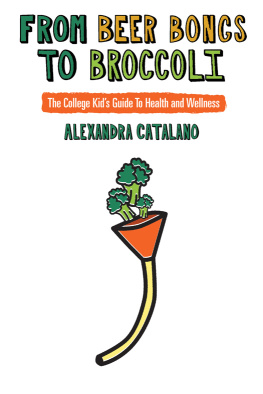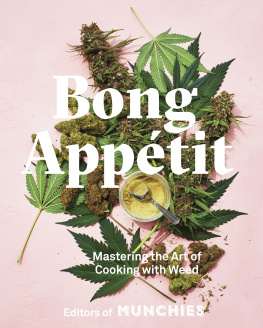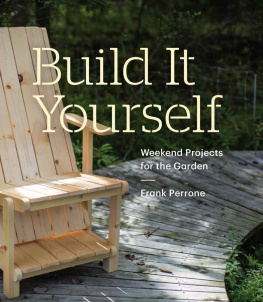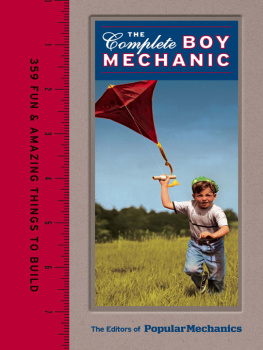BUILD THIS BONG
BUILD THIS BONG
Instructions and Diagrams for 40 Bongs, Pipes, and Hookahs
Text and illustrations by Randy Stratton

Text and illustration copyright
2007 by Randy Stratton.
All rights reserved. No part of this book may be reproduced in any form without written permission from the publisher.
Library of Congress Cataloging-in-Publication Data:
Stratton, Randy.
BUILD THIS BONG: Instructions And Diagrams For 40 Bongs, Pipes, And Hookahs / text and illustrations by Randy Stratton. p. cm.
eISBN: 978-0-8118-7217-1
1. Handicraft. 2. Smoking paraphernalia. I. Title.
TT157.S826 2006
688.4dc22
2006012068
Cover illustration by Jesse Ewing
Chronicle Books LLC
680 Second Street
San Francisco, California 94107
www.chroniclebooks.com
Krazy Straw is a registered trademark of Curt Products, Inc. Plexiglas is a registered trademark of the Rohm and Haas Company. Trademark owners do not sponsor, endorse, or support the projects in Build This Bong.
A Disclaimer: This book is intended as a practical guide. It is important that all the instructions are followed carefully, as failure to do so could result in injury. Every effort has been made to present the information in this book in a clear, complete, and accurate manner. However, not every situation can be anticipated and there can be no substitute for common sense. As with any craft project, check product labels to make sure the materials you use are safe and nontoxic. The author and Chronicle Books disclaim any and all liability resulting from injuries or damage caused during the production or use of the crafts discussed in this book. It should go without saying that smoking tobacco, wacky or otherwise, not only may be but most definitely is hazardous to your health. Further, neither Chronicle Books nor the author promotes the use of illegal substances, and both parties hereby disclaim any liability for any consequence of your choice to use them in conjunction with the projects in this book.
The author would like to gratefully acknowledge his wife, his mother, and his editor. He would also like to thank all of those who helped with this project in any way, knowingly or otherwise, but who shall remain anonymous.
CONTENTS
INTRODUCTION
Despite the protestations of his body, man has long sought pleasure through the smoking of various plants and herbs. In an effort to increase his pleasure, he has also sought ways to increase the volume of smoke he may consume, while at the same time decreasing, through cooling and filtration, the discomforts associated with smoking. One such means is the use of a device commonly referred to as a bong.
Bongs have been around for ages, but it wasnt until the late 60s and early 70s that they were introduced to Western culture, by soldiers who had either seen or used similar devices while serving in Vietnam. There, simple pipes made from a section of bamboo, with a wooden bowl and stem and containing a small amount of water to cool and filter the smoke, are used for smoking raw tobacco. They are known as thuoc lao (pronounced took-lau) pipes. The name bhang comes from the Thai language, and the word bong first appeared in Websters dictionary in 1972. While the use of simple wooden water pipes for smoking tobacco is still widespread throughout Southeast Asia, modern bongs have evolved into a high-tech art form.
Modern bongs can be rather elaborate in their construction, but most bongs are still usually relatively simple. They will normally feature a small bowl attached to a stem, which is inserted into a cylinder that is usually partially filled with water. The bowl holds the material that is to be smoked, and will often hold only as much material as may be burned and inhaled in one deep breath. The stem connects the bowl to the cylinder, which will always have at least one open end from which to inhale the smoke.
A bong may also have a hole on the side of the chamber, above the level of the water, which is referred to as the carba term that is likely derived from the word carburetor. The use of a carb makes it easier to clear the chamber once it is filled with smoke. Some bongs may not have a carb hole, but rather an easily removable bowlinsulated in some way to prevent burning ones fingerswhich allows the chamber to be cleared more easily as well. Hookahs may or may not have any sort of carb at all. A carb is not essential. It simply makes clearing the chamber of smoke quicker and easier.
Using a bong is quite easy. First, that which is going to be smoked is placed in the bowl, then the mouth is placed over the open end of the bong, and a finger is placed over the carb hole. Smoke is drawn into the bong as the contents of the bowl are burned. The smoke is cooled and filtered as it passes through the water. The remaining space within the cylinder allows for the expansion of the smoke. Once the bong is filled with smoke, the carb is released and the smoke is inhaled.

GETTING STARTED
The beauty of bongs is that they are such simple devices, they can be made from almost anything. Some basic tools are required, but no special skills are necessary. This book shows you how to make a variety of bongs. It also covers hookahs, which are similar to bongs but have a length of hose through which the smoke is inhaled, as well as a few pipes. The projects contained herein range from simple to elaborate, and use materials that may either be found around the house or easily obtained. Some are made entirely from items that can be found in the plumbing and lighting sections of your local hardware store, while others also require acrylic tubing and Plexiglas, which can be found at plastics specialty stores. Some are intended to work in a pinch and then be discarded after they have been used, while others are meant to last and even to be quite attractive.
One neednt be an experienced craftsperson to create completely functional smoking devices. The projects in this book are designed so that even if youre a novice, you will be able to build something that could not only pass for store-bought, but will likely impress your friends as well. Deciding which project to make will be less a matter of skill level, and more a matter of ambition and availability of supplies.

BONG CAPACITY
The projects in this book are designed to yield bongs, pipes, and hookahs of a given size. Keep in mind that these are simply guidelines. Feel free to make yours larger or smaller, if you like. Before doing so, however, it may be useful to know how much smoke your lungs can hold, and how to determine the volume of a bong or cylinder. Also, it is important to remember that a bong should not be so tall that you cannot reach the bowl to light it while your mouth is over the opening; otherwise you will need to have someone else light it for you.
Determining the volume of a cylinder is quite simple. First, multiply the square of its radius (the radius is half its diameter) by pi (3.14), then multiply the result by its height. To put it another way, radius radiusxpi height = volume. Or, v = r2h.
Next page











